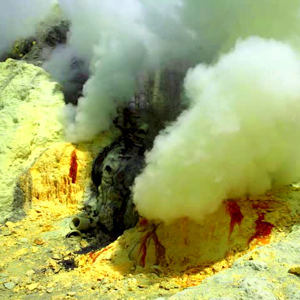Sulphur dioxide is a colorless, bitter, non-flammable, with a pungent odor that irritates the eyes and respiratory system.
Natural resources:
volcanic eruptions, marine phytoplankton, bacterial fermentation in wetlands, oxidation of sulfur-containing gas resulting from the decomposition of biomass.
Anthropogenic sources:
(Due to human activities): heating systems of the population that does not use gas, power plants, industrial processes (steel, refinery, sulfuric acid), pulp and paper and, to lesser extent, emissions from diesel engines.
Effects on human health
Depending on the concentration and exposure time sulfur dioxide have various effects on human health.
Exposure to high concentrations of sulfur dioxide, a short period of time can cause severe breathing difficulties. They affect mainly people with asthma, children, the elderly and people with chronic respiratory diseases.
Exposure to low concentrations of sulfur dioxide in the long term can result in respiratory tract infections.
Sulphur dioxide may potentiate the effects of ozone dangerous.
Effects on plants
Sulfur dioxide affects many species of plants visible, negative effect on their structure and tissue is noticeable to the naked eye.
Some of the most sensitive plants are pine, vegetables, acorns red and black, white ash, alfalfa, melons.
Environmental effects
In the atmosphere, contributing to the acidification of precipitation, with toxic effects on vegetation and soil.
Increasing the concentration of sulfur dioxide accelerates the corrosion of metals due to acid formation.
Sulfur oxides can erode stone, masonry, paints, fibers, paper, leather and electrical components.

